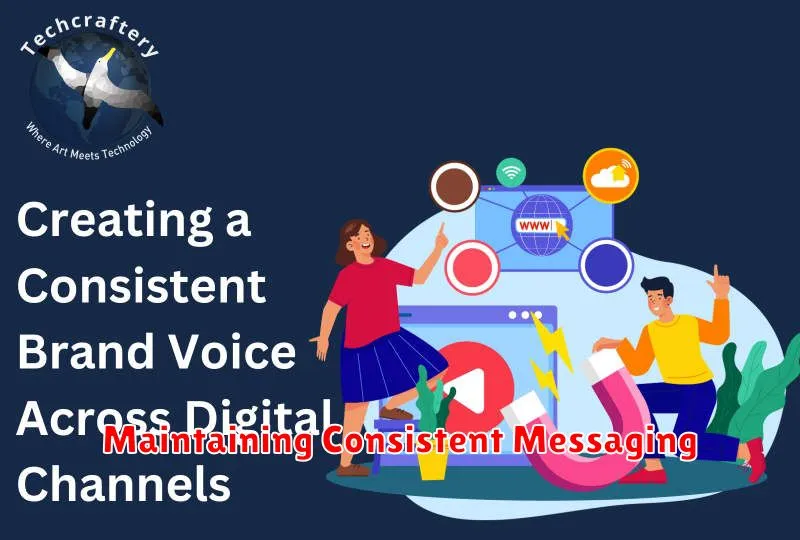In today’s fragmented media landscape, reaching your target audience effectively requires a strategic approach that goes beyond single-channel marketing. Cross-channel marketing offers a solution by orchestrating a cohesive and personalized customer journey across multiple touchpoints. This approach leverages the strengths of various channels, including email, social media, search engine optimization (SEO), paid advertising, and content marketing, to create a unified and impactful brand experience. A successful cross-channel marketing campaign requires careful planning, execution, and analysis to ensure a seamless and engaging experience for your audience, ultimately driving conversions and maximizing your return on investment (ROI). Learning how to effectively run a cross-channel marketing campaign is essential for businesses looking to thrive in the modern marketplace.
This comprehensive guide will provide you with a step-by-step framework for developing and executing a high-performing cross-channel marketing campaign. From defining your target audience and setting clear objectives to selecting the right channels and measuring your results, we will cover the essential elements of a successful strategy. We will delve into the intricacies of cross-channel marketing, exploring best practices for integrating your channels, personalizing your messaging, and optimizing your campaigns for maximum impact. By understanding the power of cross-channel marketing and implementing the strategies outlined in this guide, you can elevate your marketing efforts, strengthen customer relationships, and achieve significant business growth.
What is Cross-Channel Marketing
Cross-channel marketing is a multi-faceted approach to marketing that aims to provide a seamless and integrated customer experience across all the channels a customer interacts with a business. This means delivering consistent messaging and branding whether the customer is browsing your website, engaging with your social media, receiving emails, or visiting your physical store.
Instead of treating each channel as a separate entity, cross-channel marketing orchestrates them to work together, creating a unified brand experience. This strategy acknowledges that customers may start their journey on one channel and continue on another, expecting a consistent and personalized experience throughout. The ultimate goal is to improve customer engagement, drive conversions, and foster stronger customer relationships by meeting the customer where they are and providing a relevant experience.
Integrating Social, Search, and Email
A truly effective cross-channel marketing campaign requires seamless integration between social media, search engine marketing, and email campaigns. These channels shouldn’t operate in silos, but rather support and amplify each other.
Social media can be used to build brand awareness and drive traffic to landing pages designed to capture email addresses. Contests and engaging content are effective tactics for list building. Share snippets of your email content on social media to entice sign-ups.
Search engine marketing (SEM), including paid search and SEO, plays a crucial role in driving targeted traffic to your website. Use SEM to promote content offers and lead magnets that encourage email subscriptions. Ensure landing pages are optimized for conversions.
Email marketing allows for personalized communication and nurturing leads through the sales funnel. Segment your email list based on data gathered from social media and search interactions to deliver highly relevant content. Use email to promote your social media presence and upcoming webinars or events advertised through SEM.
Maintaining Consistent Messaging

Consistency is paramount in cross-channel marketing. A disjointed message can confuse your audience and dilute your brand identity. Ensure your core message remains the same across all channels, even if the format or delivery method varies.
Consider your brand voice. Is it formal, informal, playful, or serious? This voice should be reflected in every piece of content, regardless of the platform. Maintain a consistent tone and style in your writing and visuals.
Key elements of your message, such as your unique selling proposition (USP) and call to action (CTA), should be easily recognizable across channels. While you may adjust the wording slightly to fit the platform’s conventions, the core message must remain intact.
Attribution Modeling Techniques
Understanding how your different marketing channels contribute to conversions is crucial. Attribution modeling assigns credit to touchpoints in the customer journey. Selecting the right model is key to optimizing your cross-channel strategy.
Several attribution models exist, each with its own strengths and weaknesses. Some common models include:
- Last Click: Gives 100% credit to the last click before conversion. Simple, but often inaccurate.
- First Click: Attributes all credit to the first touchpoint. Useful for focusing on initial engagement.
- Linear: Distributes credit evenly across all touchpoints. Provides a balanced view but may not reflect actual influence.
- Time Decay: Gives more credit to touchpoints closer to the conversion, acknowledging recency’s influence.
- Position-Based: Assigns a higher percentage of credit to the first and last touchpoints, recognizing both initial engagement and final conversion drivers.
- Data-Driven: Uses your own data and algorithms to determine the most accurate attribution weights. More complex but potentially highly effective.
Choosing the right model depends on your business goals and the complexity of your customer journey. Consider testing different models to determine which provides the most valuable insights.
Measuring Overall Performance

Measuring the overall performance of your cross-channel marketing campaign is crucial for understanding its effectiveness and making data-driven decisions for future campaigns. Key Performance Indicators (KPIs) provide quantifiable metrics to evaluate success.
Begin by establishing your primary campaign goal. Is it to increase brand awareness, drive sales, or generate leads? This goal will inform which KPIs are most relevant. Some common KPIs for cross-channel campaigns include:
- Return on Investment (ROI): Measures the profitability of the campaign.
- Conversion Rate: Tracks the percentage of users who complete a desired action (e.g., purchase, sign-up).
- Customer Acquisition Cost (CAC): Calculates the cost of acquiring a new customer.
- Website Traffic: Monitors the volume and source of traffic to your website.
- Engagement Metrics: Assess audience interaction across channels (e.g., likes, shares, comments).
Analyze the performance of each channel individually and as a collective. Identify which channels are driving the most valuable results and adjust your strategy accordingly. Consistent monitoring and analysis are essential for optimizing your cross-channel marketing efforts.
Budget Allocation Strategies
A crucial aspect of running a successful cross-channel marketing campaign is effective budget allocation. Distributing resources strategically across different channels maximizes your reach and return on investment (ROI).
Several strategies can be employed. The 70/20/10 rule suggests allocating 70% of your budget to proven channels, 20% to emerging channels, and 10% for experimentation. Alternatively, a channel-specific approach analyzes each channel’s potential ROI and allocates budget accordingly.
Consider these factors when allocating your budget: target audience, channel performance, and campaign goals. Regularly monitor and adjust your budget based on performance data to optimize your campaign’s effectiveness.

